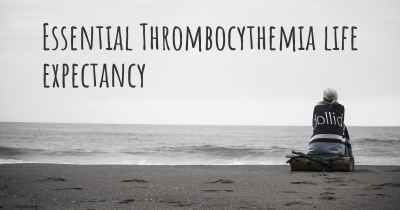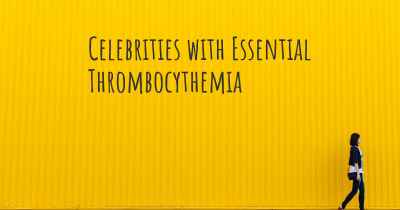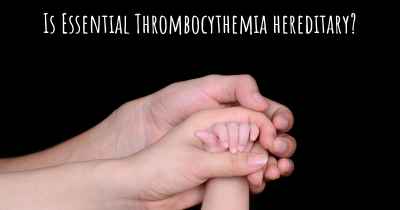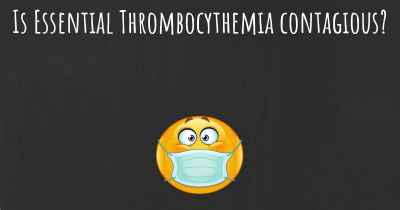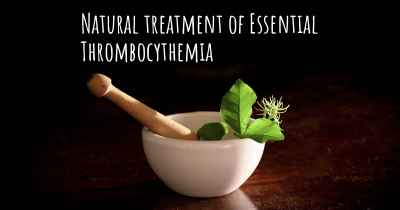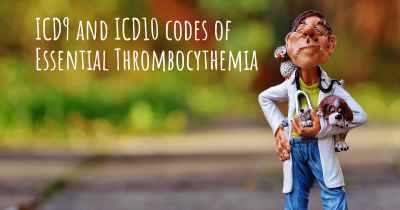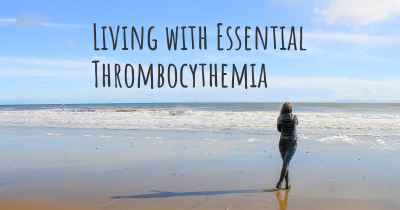What is the history of Essential Thrombocythemia?
When was Essential Thrombocythemia discovered? What is the story of this discovery? Was it coincidence or not?
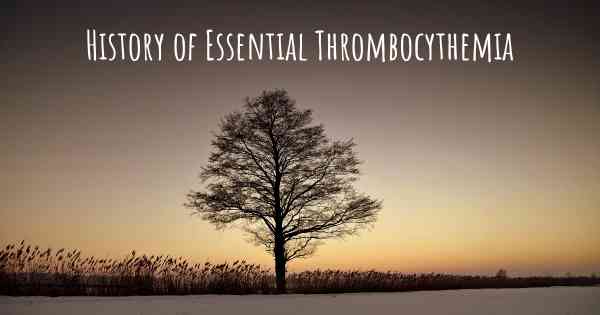
Essential Thrombocythemia (ET) is a rare chronic blood disorder characterized by the overproduction of platelets in the bone marrow. Platelets are essential for blood clotting, and their excessive production can lead to various complications.
Historical Background:
The history of Essential Thrombocythemia dates back to the early 20th century when medical researchers began to observe patients with unexplained high platelet counts. However, it wasn't until the 1950s that the condition was formally recognized and named.
Discovery and Naming:
In 1951, Dr. William Dameshek, an American hematologist, first described a group of patients with a distinct set of symptoms, including high platelet counts, bleeding, and blood clotting. He named this condition "Thrombocythemia" to reflect the increased number of platelets in the blood.
Further Understanding:
Over the following decades, researchers made significant progress in understanding the underlying causes and mechanisms of Essential Thrombocythemia. They discovered that the disorder is primarily caused by a mutation in the Janus Kinase 2 (JAK2) gene, which leads to the overproduction of platelets.
Diagnostic Criteria:
In 2005, the World Health Organization (WHO) established diagnostic criteria for Essential Thrombocythemia. These criteria include a sustained platelet count above 450,000 per microliter of blood, the presence of JAK2 mutation, and the exclusion of other causes of thrombocytosis.
Prevalence and Risk Factors:
Essential Thrombocythemia is a relatively rare disorder, with an estimated incidence of 1-2 cases per 100,000 individuals per year. It can affect people of any age, but it is more commonly diagnosed in individuals over the age of 50. The condition is slightly more prevalent in women than in men.
Clinical Features and Complications:
Patients with Essential Thrombocythemia may initially be asymptomatic or present with mild symptoms. The most common symptoms include headache, dizziness, fatigue, and bleeding, such as nosebleeds or easy bruising. However, the disorder can progress and lead to more severe complications, including blood clots, stroke, heart attack, and in rare cases, transformation into acute leukemia.
Treatment and Management:
There is currently no cure for Essential Thrombocythemia, but various treatment options are available to manage the condition and prevent complications. The choice of treatment depends on the patient's age, overall health, and risk of thrombotic events. Common treatment approaches include low-dose aspirin, platelet-lowering medications, and periodic phlebotomy (blood removal) to reduce platelet counts.
Research and Future Directions:
Ongoing research aims to further understand the molecular mechanisms underlying Essential Thrombocythemia and develop more targeted therapies. Scientists are investigating new drugs that specifically target the JAK2 mutation and exploring the role of other genetic mutations in the development of the disorder.
In conclusion, Essential Thrombocythemia is a rare blood disorder that was first described by Dr. William Dameshek in the 1950s. Significant progress has been made in understanding the condition, its diagnostic criteria, and available treatment options. Ongoing research continues to shed light on the underlying causes and potential future therapies for this complex disorder.
Microvascular occlusion of the toes and fingers causes digital pain; gangrene; or erythromelalgia, which is is characterized by burning pain and dusky extremity congestion
The pain increases with exposure to heat and improves with cold; a single dose of aspirin may provide relief for several days
Headache is the most common neurologic symptom. Patients also report paresthesias and episodic transient ischemic attacks; transient neurologic symptoms include the following:
Unsteadiness
Dysarthria
Dysphoria
Vertigo
Dizziness
Migraine
Syncope
Scotoma
Seizures
Thrombosis of large veins and arteries is common and may result in occlusion of the leg, coronary, and renal arteries. Other arteries may be involved, including retinal arteries. [21] Venous thrombosis of the splenic, hepatic, or leg and pelvic veins may develop. Priapism is a rare complication. Pulmonary hypertension may result from pulmonary vasculature occlusion.
Bleeding complications are as follows:
The gastrointestinal tract is the primary site of bleeding complications; approximately 40% of these patients have duodenal arcade thrombosis, resulting in sloughing of the duodenal mucosa, simulating a duodenal ulcer
Other sites of bleeding include the skin, eyes, gums, urinary tract, joints, and brain
Bleeding is usually not severe and only rarely requires transfusion
The bleeding is generally associated with a platelet count greater than 1 million/µL
Constitutional symptoms occur in 20-30% of patients. Weight loss is unusual. Other symptoms include sweating, low-grade fever, and pruritus.
Posted Aug 11, 2017 by Steve 2685
Posted Feb 7, 2019 by James 3550
